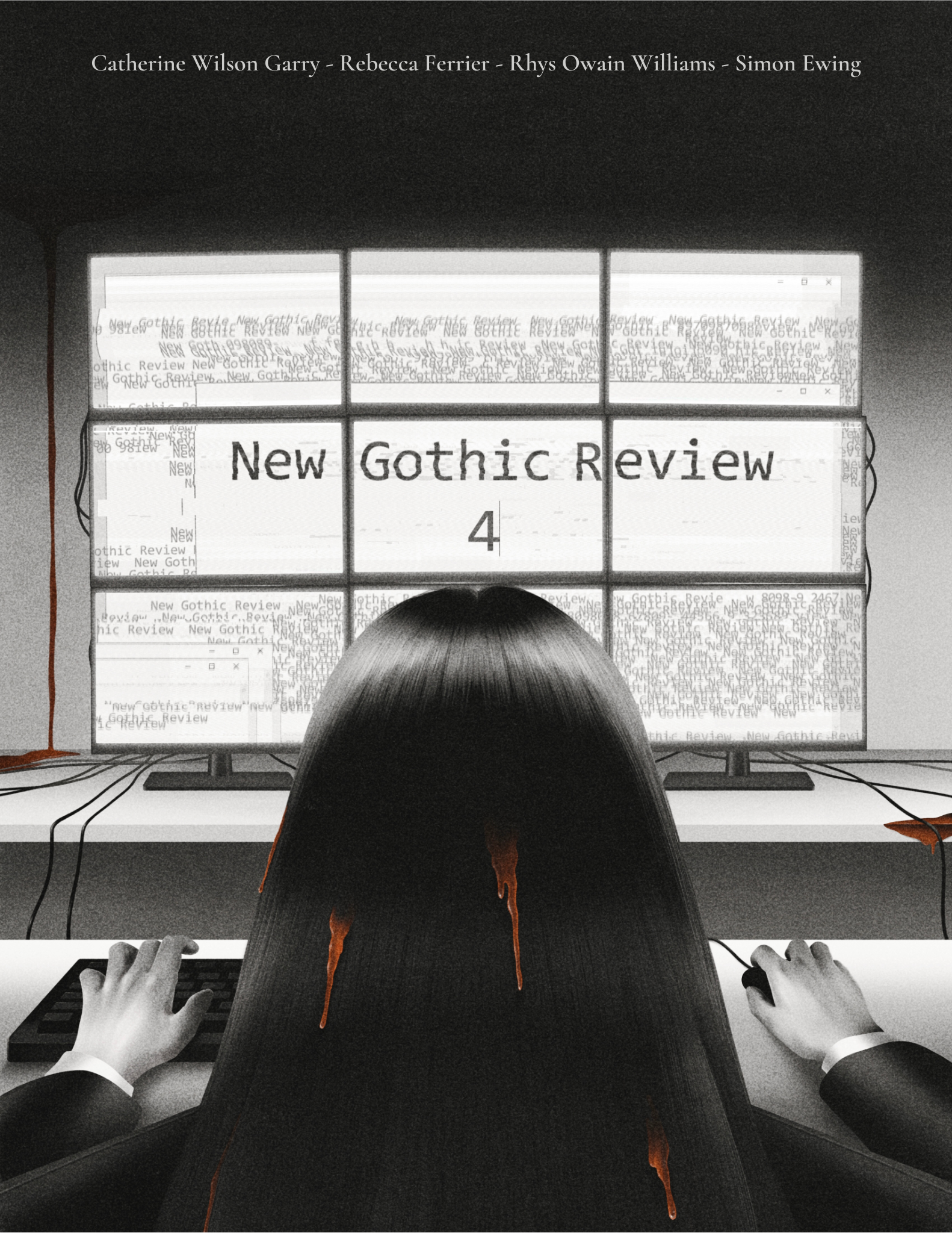
Rebecca Parfitt has been published widely. Her debut poetry collection The Days After was published by Listen Softly London in 2017. In 2020 she was awarded a Literature Wales writer’s bursary to complete her short story collection, Sometimes They Arrive Late & Other Macabres, of which she is still looking for a publisher. In August 2020 her first film, Feeding Grief to Animals, was commissioned by the BBC and FilmCymruWales. She is founder and editor of The Ghastling, a magazine devoted to quiet horror and the macabre. She lives in the wilds of south Wales, UK.
We often feel that some of the best gothic literature happens outside of the gothic genre. If you strip away the tropes and the familiar imagery, what do you feel is at the heart of gothic literature?
Decay.
Something quietly rots but nobody knows quite where the smell is coming from, yet.
How do you feel Sometimes They Arrive Late fits into that conception of gothic literature?
Without wanting to give too much of the story away for anybody who hasn’t read it yet, Chloe’s body is failing her, she has made a terrible, yet inevitable, bargain in order to fix the problem and get what she wants. And she herself is the product of a festering family secret, one that she only comes to realise when she returns to her maternal homeland. And one that seems to rear its ugly head with each generation… If you look carefully, you’ll see the decay, the rot, in everything.
Can you speak to any inspirations or influences for the piece?
I was pregnant with my daughter when I wrote this. Prior to this I had suffered a miscarriage which was deeply traumatic. I made bargains with myself all the time and for a while I resented seeing pregnant women around – I just couldn’t bear it. A few months after the miscarriage, I was pregnant again. But I was in a strange emotional state of deep grief and total elation – two things which never really go together. Throughout the pregnancy the anxiety of losing another one never left me. I was also caught by a strange thought that I was pregnant with one child when I should have been pregnant with another. I counted the months down to the due date of the first baby, and only once that time had passed did I feel like some of the healing, the grieving had passed. I was very aware that one baby had died in order to make space for her – and if that baby hadn’t died, I would never have her. It is an odd and unexplainable feeling that I have been exploring in my work ever since.
Waiting for your first child to arrive is a strange and beautiful thing. It is a complete unknown and I suppose the more macabre depths of my imagination did sometimes stray to: what if I give birth to a monster? What if the baby who died has taken its revenge on this one and something terrible happens? Yes, I am aware of how ridiculous this sounds, but as a writer and reader of horror, it’s quite natural! And everything about pregnancy is odd. So I drifted around in a constant state of bewilderment feeling quite alien to myself as my body just did its own thing. I think writing this story was a way to exorcise some of that anxiety of the unknown within.
My partner is Filipino and we go back to visit his family and friends on Negros island whenever we can. It is the most vibrant, lively, beautiful, and at times, otherworldly place, I have ever been to. Superstition and folklore is alive and well and they have some of the most terrifying creatures of folklore in the world – in my opinion. It has been a hugely influential place for my work. Mumbakal is a real place and I did have a strange experience when I was staying there: a woman’s face looking in at me from a window that, from the outside, could not possibly have been reached from the ground without a ladder. It was late at night and there was no such ladder. This was where the story first germinated but it was a few years before I actually sat down to write it.
Place and setting are integral aspects of gothic stories. How do place and region play a role in your fiction?
Actually, it is unusual for me to place stories in a specific location. I am usually quite vague and ambiguous about place, (I am usually more concerned about what the weather is doing). My stories are set in places that could be familiar to anyone but are impossible to visit because they exist elsewhere. But for this story it was essential to be clear about where it was set. It could not have been set in any other location.
What is your writing process generally like? Where are you most productive? Any interesting quirks?
Unless I’m editing, I can’t sit for hours writing. I’m much more productive when I write in short sharp bursts. Which is just as well because family life squeezes everything. I am lucky enough to have my own writing room which has a lovely view over the garden and the mountain opposite. I used to love going to my local library, or writing in a cafe but the pandemic has put a dampener on that, sadly. Sometimes I light a candle. I burn incense constantly – and always have a bit of music on in the background – anything that suits the mood of the writing I’m working on. Music is often my creative catalyst. It helps me to visualise, write and think.
What authors are you reading that you’re particularly excited about?
Daisy Johnson is a new contemporary love of mine; Seishi Yokomizo – author of vintage Japanese murder mysteries set in the 20s & 30s; an old copy of the A-Z book of British ghosts, compiled in the 70s, and as it’s October I dig out M.R. James as a ritual every year.
What’s your favorite horror movie monster?
Hard to pick one but a couple that jump to my mind: Fargo’s Lorne Malvo, for sheer terror, and Colin Robinson – the energy vampire from What We Do In The Shadows (such a genius idea for a vampire character!) I am in awe of the writers of this series.




